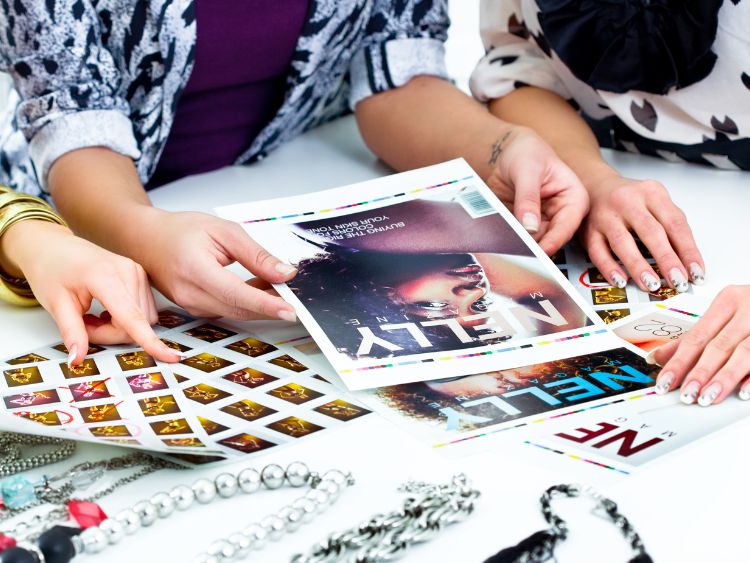The 2000s were a transformative decade for fashion, and if you were a fashion enthusiast during that time, chances are you had a stack of fashion magazines by your bedside. Magazines like Vogue, Elle, and Cosmopolitan were not just sources of fashion advice—they were the fashion bibles that shaped trends, defined beauty standards, and introduced us to the most iconic looks of the era. Whether you were flipping through pages to find the latest in denim trends or searching for the perfect pair of low-rise jeans, these magazines were your go-to guides.
The Rise of 2000s Fashion Magazines
The 2000s were marked by a distinct shift in how fashion was consumed. The internet was just beginning to take off, but for the most part, print magazines reigned supreme. The glossy pages of 2000s fashion magazines were filled with everything from haute couture runway highlights to accessible street style, making fashion more democratic than ever before.
Why were these magazines so popular?
For one, they captured the zeitgeist of the 2000s—a time of rapid technological advancement, cultural shifts, and the emergence of new fashion icons. Magazines were also a gateway to the aspirational world of fashion. You didn’t need to be in Paris, New York, or Milan to be part of the fashion conversation; all you needed was the latest issue of Vogue or Harper’s Bazaar.
Iconic Trends and Fashion Moments
The 2000s were a time of bold fashion choices, and 2000s fashion magazines were at the forefront of documenting these trends. Some of the most iconic trends of the decade included:
- Low-Rise Jeans: If there was one trend that defined the early 2000s, it was low-rise jeans. Magazines were filled with images of celebrities like Britney Spears and Christina Aguilera rocking this daring style.
- Velour Tracksuits: Thanks to brands like Juicy Couture and their heavy presence in fashion magazines, the velour tracksuit became a staple of casual wear. Who could forget Paris Hilton’s infamous slogan, “That’s hot,” while donning a bright pink tracksuit?
- Cargo Pants: With a nod to utility and street style, cargo pants were featured in countless spreads, emphasizing their versatility and edgy appeal.
- Boho-Chic: The boho-chic trend, popularized by stars like Sienna Miller and Mary-Kate Olsen, was all about effortless, eclectic styling. Magazines highlighted how to mix vintage finds with designer pieces to achieve this laid-back look.
- Statement Belts: Big, bold belts were the accessory of choice, often cinching dresses or oversized tops to create a defined silhouette.
These trends were not just limited to high fashion; 2000s fashion magazines made these styles accessible to the average reader, offering tips on how to incorporate them into everyday wardrobes.
The Influence of Celebrities
In the 2000s, celebrities became more than just movie stars or singers—they were style icons whose every outfit was dissected and emulated. 2000s fashion magazines capitalized on this celebrity culture, dedicating entire issues to the wardrobes of stars like Jennifer Lopez, Beyoncé, and the Olsen twins.
What made celebrity fashion so influential?
Celebrities were seen as the epitome of cool, and magazines provided an inside look at their style choices, from red carpet events to casual streetwear. Readers could see how their favorite stars dressed and find affordable ways to replicate those looks. It wasn’t uncommon to see headlines like “Get the Look for Less” or “Steal Her Style” splashed across magazine covers, further bridging the gap between high fashion and the everyday consumer.
The Editorial Powerhouses Behind the Magazines
Behind every great 2000s fashion magazine was a team of creative visionaries—editors, photographers, stylists, and writers who brought the pages to life. Editors like Anna Wintour (Vogue), Glenda Bailey (Harper’s Bazaar), and Robbie Myers (Elle) were instrumental in shaping the fashion landscape of the 2000s. Their editorial decisions had the power to make or break trends, launch careers, and define what was considered “in” or “out.”
How did these editors influence fashion?
These editors were gatekeepers of fashion, with the ability to set the tone for each season. They curated content that balanced high fashion with commercial appeal, ensuring that their magazines were both aspirational and relatable. Through their leadership, 2000s fashion magazines became not just publications, but cultural institutions that defined a generation.
The Impact of Advertising
It’s impossible to talk about 2000s fashion magazines without mentioning the role of advertising. Ads were more than just revenue streams—they were an integral part of the magazine experience. Luxury brands like Gucci, Prada, and Louis Vuitton used magazine spreads to create visually stunning campaigns that were as much about selling a lifestyle as they were about selling products.
Why were ads so effective?
These advertisements were meticulously crafted to appeal to the reader’s desire for luxury, beauty, and status. The placement of these ads within the editorial content created a seamless blend of commerce and creativity, making them almost as important as the articles themselves. The glossy pages of a magazine were the perfect canvas for these brands to tell their stories, and readers were eager to buy into the dream they were selling.
The Evolution of the Magazine Industry
As the 2000s progressed, the fashion magazine industry began to face new challenges. The rise of the internet and the advent of social media started to change how people consumed fashion. Blogs and online platforms offered instant access to fashion news, often faster than print magazines could keep up. Yet, 2000s fashion magazines adapted, embracing the digital age by launching their own websites and social media accounts.
How did magazines adapt?
They expanded their reach beyond the printed page, offering online content, video interviews, and interactive features that engaged a new generation of readers. This digital transformation allowed magazines to stay relevant, but it also marked the beginning of the end for some print editions.
The Legacy of 2000s Fashion Magazines
Today, the influence of 2000s fashion magazines can still be felt. Many of the trends they popularized have made a comeback, and the celebrities they featured remain style icons. Moreover, the editorial standards set by these magazines continue to inspire current fashion publications.
Why do these magazines still matter?
They serve as a time capsule of a vibrant decade in fashion history. The 2000s were a unique blend of innovation and nostalgia, and the magazines from that era captured that spirit perfectly. Whether you’re reminiscing about your favorite trends or discovering them for the first time, these magazines offer a window into a world where fashion was bold, experimental, and endlessly fascinating.
FAQs About 2000s Fashion Magazines
- What were the most popular fashion magazines in the 2000s?
Some of the most popular fashion magazines in the 2000s included Vogue, Elle, Cosmopolitan, Harper’s Bazaar, and InStyle.
- How did 2000s fashion magazines influence trends?
2000s fashion magazines were instrumental in popularizing trends by featuring the latest styles, celebrity fashion, and editorials that showcased how to wear these trends in real life.
- Are any 2000s fashion trends making a comeback?
Yes, many 2000s fashion trends, such as low-rise jeans, cargo pants, and boho-chic styles, are making a comeback in modern fashion.
- What role did celebrities play in 2000s fashion magazines?
Celebrities were key figures in 2000s fashion magazines, often serving as the inspiration for fashion spreads and influencing readers’ style choices.
- How have fashion magazines evolved since the 2000s?
Since the 2000s, fashion magazines have evolved by embracing digital platforms, expanding their content online, and integrating social media to reach a broader audience.
Summary
The 2000s were a decade defined by bold fashion choices and the influential power of fashion magazines. From low-rise jeans to celebrity style, 2000s fashion magazines played a pivotal role in shaping trends and making fashion accessible to everyone. Despite the rise of digital media, these magazines have left an enduring legacy, capturing the essence of a vibrant and transformative era in fashion. As we look back on the 2000s, it’s clear that these magazines were more than just publications—they were cultural landmarks that continue to inspire and influence fashion today.
Authoritative Links Related to ‘2000s Fashion Magazine’
This article offers a comprehensive look at the role of 2000s fashion magazines in shaping fashion trends and culture, ensuring it is both informative and engaging for readers interested in fashion history.







